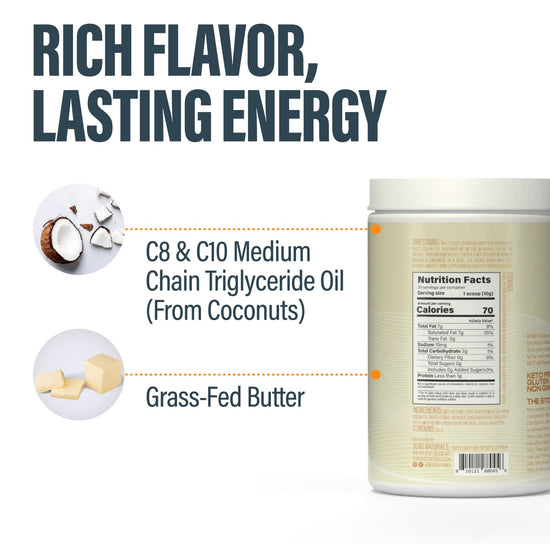Table of Contents
- Introduction
- What Is Non-Dairy Creamer?
- How Long Does Non-Dairy Creamer Last?
- Signs That Non-Dairy Creamer Has Gone Bad
- How to Store Non-Dairy Creamer Properly
- Can You Use Non-Dairy Creamer After the Expiration Date?
- What Happens If You Consume Expired Non-Dairy Creamer?
- Conclusion
- Frequently Asked Questions (FAQs)
Introduction
Coffee lovers often find joy in the perfect cup of coffee, and for many, that means adding a splash of creamer. But have you ever wondered about the longevity of your favorite non-dairy creamers? Does non-dairy creamer go bad? When we reach for that bottle or carton sitting in the pantry, it’s crucial to understand what that expiration date really means and how to keep our coffee experience delightful.
As consumers, we often rely on best-before dates as indicators of freshness, but these dates can be misleading. Many of us have unwittingly consumed products past their expiration, and non-dairy creamers are no exception. Knowing how long these products last, the signs of spoilage, and proper storage techniques can make all the difference in your coffee routine.
In this blog post, we will delve into the world of non-dairy creamers, exploring their shelf life, how to tell if they’ve gone bad, and the best practices for storage. By the end, you'll have a clear understanding of how to enjoy your coffee creamer to the fullest while minimizing food waste and ensuring safety.
Let’s embark on this journey together to explore the nuances of non-dairy creamers and their longevity!
What Is Non-Dairy Creamer?
Non-dairy creamer is a popular choice for those who prefer plant-based options or are lactose intolerant. Unlike traditional creamers derived from milk, non-dairy creamers are made from a blend of water, sugar, vegetable oils, and various stabilizers or emulsifiers. Commonly found in both liquid and powder forms, these creamers offer a variety of flavors to enhance your coffee experience.
Types of Non-Dairy Creamers
-
Liquid Creamers: These are typically found in refrigerated sections of grocery stores and need to be kept cold once opened. They are often made from almond, soy, oat, or coconut milk.
-
Powdered Creamers: These shelf-stable options provide convenience and have a longer shelf life. They are often made from vegetable oils, sugar, and other additives to replicate the creaminess of liquid creamers.
-
Single-Serve Creamer Cups: These small, pre-portioned cups are perfect for on-the-go coffee drinkers. They typically have a longer shelf life due to their sealed packaging.
Understanding the distinctions between these types can help determine the expected shelf life and storage needs.
How Long Does Non-Dairy Creamer Last?
The longevity of non-dairy creamers varies based on their type and storage conditions. Here’s a breakdown of the expected shelf life for different forms of non-dairy creamers:
1. Unopened Liquid Non-Dairy Creamers
- Shelf Life: Generally, unopened liquid non-dairy creamers can last up to a month past the printed best-by date when stored in a cool, dark place.
- Storage Tip: Keep them in the pantry until opened. Once opened, refrigerate promptly.
2. Opened Liquid Non-Dairy Creamers
- Shelf Life: After opening, liquid non-dairy creamers should ideally be consumed within 7 to 10 days for the best taste and quality.
- Storage Tip: Always refrigerate after opening and ensure the lid is tightly sealed.
3. Powdered Non-Dairy Creamers
- Shelf Life: Powdered creamers can last up to two years when stored properly in a cool, dry place. After opening, they should be consumed within a few months for optimal flavor.
- Storage Tip: Store in an airtight container to prevent moisture absorption.
4. Single-Serve Creamer Cups
- Shelf Life: These can last anywhere from 6 to 12 months unopened. Once opened, they should be consumed immediately for the best flavor.
- Storage Tip: Keep them in a cool place until ready to use.
Signs That Non-Dairy Creamer Has Gone Bad
Just because a product is past its best-by date doesn’t automatically mean it’s unsafe to consume. However, it’s essential to know the signs that indicate your non-dairy creamer may have spoiled:
1. Bad Smell
The first indicator of spoilage is often the smell. Fresh non-dairy creamer should have a sweet, pleasant aroma. If it smells sour or rancid, it’s time to dispose of it.
2. Off Taste
If you’re unsure about the smell, a small taste test can help. If the flavor has turned sour or seems off, it’s best not to use it in your coffee.
3. Texture Changes
Examine the consistency of your non-dairy creamer. If you notice clumps, curdling, or any unusual texture, it’s a strong sign that the creamer has gone bad.
4. Packaging Integrity
If the packaging appears damaged or compromised, such as puffed-up containers or leaks, it may indicate bacterial growth. Discard any compromised products immediately.
How to Store Non-Dairy Creamer Properly
Proper storage practices can significantly extend the shelf life of your non-dairy creamers. Here are some tips to keep in mind:
1. For Liquid Creamers
-
Refrigerate Immediately: Always refrigerate liquid non-dairy creamers after opening. Store them in the main compartment, not the door, to maintain a consistent temperature.
-
Seal Tightly: Ensure that the lid is securely fastened to prevent air and moisture from entering.
2. For Powdered Creamers
-
Cool, Dry Storage: Keep powdered creamers in a cool, dry place away from direct sunlight. An airtight container is ideal to prevent moisture and odor absorption.
-
Avoid Humidity: Humidity can cause powdered creamers to clump. Keep them in a stable environment with low humidity levels.
3. For Single-Serve Cups
-
Store in a Cool Place: Keep single-serve cups in a cool, dark area until you’re ready to use them.
-
Check the Expiration Date: Always check the best-by date on the packaging before use.
Can You Use Non-Dairy Creamer After the Expiration Date?
Using non-dairy creamer after its expiration date is often a matter of personal judgment. While many products may still be safe to consume shortly after the expiration date, their quality and flavor may have deteriorated.
Factors to Consider:
- Storage Conditions: If the creamer has been stored correctly, it may still be fine to use.
- Sensory Evaluation: Always assess the smell, taste, and texture before using the product. If anything seems off, it's better to err on the side of caution and discard it.
What Happens If You Consume Expired Non-Dairy Creamer?
Accidentally consuming a small amount of expired non-dairy creamer may lead to mild digestive discomfort, such as bloating or gas. However, most people will not experience severe symptoms unless they consume a significant quantity or the product was stored improperly.
When to Seek Medical Attention
If you experience severe symptoms, such as persistent nausea, vomiting, or diarrhea, consult a healthcare professional. It’s always better to be safe and seek medical advice if you’re unsure.
Conclusion
Non-dairy creamers have become staples in many coffee drinkers' routines, providing a creamy touch without the use of dairy. Understanding their shelf life, proper storage, and signs of spoilage can enhance your coffee experience while minimizing waste.
To keep enjoying your favorite non-dairy creamers, remember to check expiration dates, store them properly, and trust your senses when determining freshness.
Together, we can savor every cup of coffee while being mindful of our consumption. For those who embrace adventure and wellness in every aspect of life, proper knowledge about our food choices is just another step toward a healthier lifestyle.
Frequently Asked Questions (FAQs)
How long can I leave non-dairy creamer out of the fridge?
Non-dairy creamers should not be left out for more than two hours once opened. After that, bacteria can grow, compromising safety.
Can I freeze non-dairy creamers to extend their shelf life?
While freezing non-dairy creamers is possible, it may alter the texture and flavor. If you do choose to freeze, thaw it in the refrigerator rather than at room temperature.
What should I do if my non-dairy creamer clumps?
If your non-dairy creamer has clumped due to humidity, it’s best to discard it. Clumping can indicate spoilage or that it has absorbed moisture, affecting quality.
Are there healthier alternatives to non-dairy creamers?
Yes! Options like almond milk, oat milk, and coconut milk can serve as healthier alternatives to traditional non-dairy creamers, depending on your taste preference and dietary needs.
How can I tell if my powdered non-dairy creamer is still good?
Check for clumping, off smells, or changes in taste. If it smells or tastes off, it’s best to discard it.
By understanding the ins and outs of non-dairy creamers, we can make informed choices that enhance our wellness journey.
Written by:

Butter MCT Oil Creamer
BUBS Butter MCT Oil Creamer (formerly Halo Creamer): Scientifically-Backed Brain and Body Fuel
BUBS Butter MCT Oil Creamer is your go-to for clean, fast-acting energy and focus, no crash included. It blends creamy grass-fed butter with fast-acting MCT oil powder (C8 and C10) to kickstart your day and keep you sharp. The MCTs go straight to work, giving your brain a quick boost while the grass-fed butter supports digestion and gut health.
Together, they help curb cravings, keep you feeling full longer, and support steady energy throughout the day—perfect for fueling your mornings or powering through the afternoon slump.
Starts at $36.00
Shop

